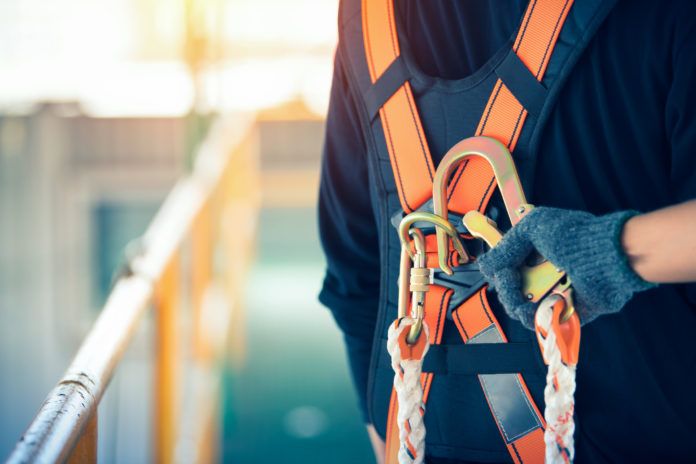As benign as it seems, personal safety in the workplace can be a somewhat controversial issue. Industrial markets like the electrical power industry, oil and gas, heavy construction, nuclear energy or any of the other “heavy lifting” industries, the thought process goes back and forth between personal safety and procedural safety.
Personal Safety versus Procedural Safety

At its core, the conflict between personal safety and procedural safety is really about who is responsible for keeping people safe while on the job. The various regulatory bodies (OSHA, NFPA, API, NRC, etc.) all have mandates for a documented procedural safety program. After all, the average employee can’t possibly know all of the hazards associated with their job or work environment their first day on the job, so having a strong adherence to procedural discipline is key to keeping employees safe while on the job. W. Edwards Deming went so far as to say, “A poor system will defeat a good employee every time.”
Conversely, every employee is still responsible for his or her safety while on the job. Most workplace incident statistics put human error as the root cause of over 70% of all workplace incidents. If you go back far enough, I would argue that the percentage is probably closer to 99%.
With such a large number of workplace incidents resulting from human error, we must put a larger focus on personal safety in the workplace.
What Is Personal Safety?
Personal safety is the result of employees’ taking responsibility for their own safety while on the job. Some people try to relate the concept of personal safety to common sense, but that is a bit misleading. Common sense is a good start to staying safe on the job, but the benefit of hindsight makes common sense a lot more obvious after an incident. It also doesn’t address the issue that sometimes personal safety means ignoring what otherwise might be considered common sense.
As an employee: An employee following a procedure that ignores a specific hazard could be excused for blindly following the procedure that puts him- or herself in harm’s way. An employee in that same situation with a strong awareness of personal safety (because he or she uses Human Performance Tools) should be able to identify any hazards not addressed in the procedure and take the proper mitigation steps to ensure the work is done safely that time and amends the procedure to address the hazard. They would potentially keep another employee from following the procedure as it was written and being hurt on the job.
To accurately define personal safety, you have to look at the tools that help employees make smart (i.e., safe) decisions while on the job.
Processes and Procedures
Process and procedures are management’s requirements for employees at every level, and while they detail a lot more than just the safety requirements of the work that is arguably the most important aspect to a good policy or procedure.
Procedures should include the steps in a process, the tools required to complete those steps, but also the hazards and other steps required to mitigate risk when performing the work. This format will vary from company to company, and may even divide the work activities into various levels of risk associated with the task – sweeping an interior office hall will have a different risk profile than working on electrical equipment in an area exposed to the elements, even though both have associated hazards.
While the removal of a hazard is the safest way to reduce the risk, this is not always possible. At a minimum, we suggest that a procedure include the potential hazards and the mitigation steps required to ensure safe operation.
But even at this stage, personal safety is important because hazard identification and risk mitigation are often the responsibility of the employee(s) doing the work.
Identify Critical Steps
Whether or not you have a procedure for the work you are about to do, you should be able to identify critical steps in the process. There are any number of critical steps that either cannot be undone or could result in serious injury if not done properly. These include lockout/tagout (LOTO) prior to starting the work, sealing a piece of equipment before using it and testing the equipment after a repair. These critical steps should prompt a stop in your work. Some companies like to call a “time out for safety” (TOFO).
Self Check
This Human Performance tool can be used at any time, but it is especially useful when an employee is working alone. Taking the time to stop and think about personal safety could be all you need to identify a potential hazard that could cause an incident. If you’re working alone, you won’t have the ability to receive help from a fellow employee by using a peer check or a second check.
Questioning Attitude
One of the most important tools someone can use to improve his or her personal safety is a questioning attitude. Being aware of your surroundings, identifying hazards hidden in a procedure or just thinking about a better way to do something are all part of having a questioning attitude.
While you shouldn’t necessarily argue with every decision your supervisor makes, you need to understand the work you’re about to do and think about the worst possible outcome if something were to go wrong.
Effective Communication
Poor communication is one of the easiest traps to tall into that could lead to an incident. For personal safety, it is important that you understand your work instructions and ensure that you are understood when giving instructions.
Three-part (or closed-loop) communication is the easiest way to be sure what you or someone else heard is actually what was said. It’s an important part of effective communication.
Post-Job Review and Process Improvement
The post-job review and process improvement concepts have more to do with process safety, but they definitely straddle the line between personal safety and process safety.
To ensure you or someone else doing the same job don’t make mistakes in the future, you should be sure you understand your success or failure during a job and document lessons learned.
On-the-job safety is the responsibility of every employee working on every job. While process safety is management’s commitment to their employees, personal safety is a commitment you make to yourself and your family. No shortcut is worth risking your own safety. And no process, procedure or safety mechanism is 100% fool-proof.
Keep your head squarely on your shoulders, use the tools you have at hand and go home safe every day.
Toolbox Talks offers quick insights and thoughts to use for your toolbox (tailboard) talks. Dave Sowers is a founding member of Knowledge Vine, a veteran-owned human performance training and consulting organization that strives to reduce the frequency and severity of human errors in the workplace. He has almost 30 years of experience in power generation and the utility industry. He is a veteran of U.S. Navy Nuclear Power Program and holds a bachelor’s degree in resources management and a master’s degree in both management and emergency management and homeland security.



